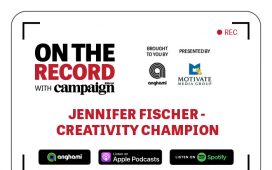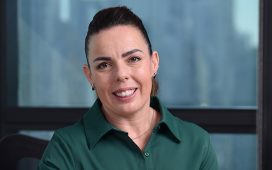Voiceover artists are being pigeonholed, writers are penning nonsense, and radio ads remain as awful as ever. Karim Sherif looks at the fate of voiceover talent
If the copulation of art and copy gave birth to ideas, adding sound gives you a ménage à trois.
An emotional piece of music or a tear-jerking script recited with conviction can move an audience in so many ways. But today, let’s focus on radio. Especially here.
A category with low prominence at award shows, radio is still the easiest to produce and broadcast with the right tools. But the fact of the matter is that radio ads have become more like wallpaper and we are letting it be as such just to gratify integration platforms without considering creative sound solutions that could stimulate and not just inform. An entertaining radio spot ought to be as enjoyable as the music track you were humming on your way to work.
The first few seconds of a great radio spot must entice the listener with a desire for further exploration. Otherwise it ends up as semantic background noise and the cognitive processing of the message you are trying to convey is forever lost among a sea of airwaves.
Writing a radio ad is very different to writing copy for print or social, just as the voice in your head while reading something is dissimilar to the voice your mind is receiving while listening to someone else’s voice. Which brings me to voiceover talent. At the very best they are clever linguists and can improve the narration of a script if it is interesting enough.
But as you are driving down the E11, you turn up the radio in the morning to hear every brand fighting for drive-time space using the same conversational-based script styles that almost sound like an episode of British soap opera EastEnders. Slap a number with the faster-than-lightning ‘terms and conditions apply’ claim and you’re done.
Seriously? Would you actually have such a conversation in real life?
EXHIBIT A
Guy: Guess what? I’ve got my credit card today. Woman: Really? Guy: Yes, and I’ve got a free voucher with it too.
Woman: That’s amazing. I wish I could apply for a credit card. VO: Now, you can with BS Bank and get a free voucher that only works at outlet mall. terms and conditions apply.
Some of these ads are so ridiculous you might as well just stick your head out the window and fill your mouth with road air. Even children sound creepy if given such scripts to read.
What’s more, different dialects have been arranged to fit different categories. Lebanese accents for beauty products; Egyptian accents for humour or to portray that guy who is about to con you into a bad deal; heavy Arabian-Gulf English accents to assure you that the 4X4 you’re buying is a reliable desert ship; and, of course, Britain’s favourite pastime – brunch ads.
As stereotypical as it may sound, this is the unfortunate truth. The mistake of booking an Egyptian voiceover talent to read a Gulf dialect script could be catastrophic. Or even worse, a Lebanese man or woman reading an Egyptian script.
A friend once quoted that ‘radio is the theatre of the mind’, knowing that your ears are not bound by the production quality of fancy visuals. It’s just a story, a song or a skit and your mind is the play button.
So, let’s step into the voiceover booth, where a producer, an agency repre- sentative and a client are watching from behind the soundproof glass. The artist reads the script, understands the story that needs to be delivered and starts to read. Getting the best delivery out of a voiceover artist is the goal, of course, but unfortunately many creatives underestimate voiceover artists and pressure them into delivering as many takes as possible, to the point of frustration. And believe me, you do not want an exhausted talent at the end of your ses- sion. Delivery quality is sure to decline.
Some 27 takes later, each member in the room has squeezed out the last bit of their money’s worth from the voiceover artist and in the end the piece required becomes a mash up of take two, take 18 and take 26. Then what happens? The account person calls up the client and literally holds the phone up to the speakers and waits for the client to pass judgment. This is true. Unfortunately.
For a brand to maintain its consistent tone, it takes more than just the writer’s ability to channel every piece to fit the brand’s credo. A brand’s voice reflects its attitude, its wisdom, its finesse and, most importantly, the power to isolate the listener’s interest as it takes the centre stage in your mind’s eye.
Karim Sherif is a voiceover artist and the voice of many brands. He is also creative group head at Memac Ogilvy Dubai









